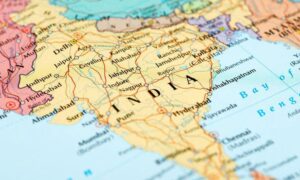For any business that deals in the supply of goods and services, their assets are the single most important thing. This is why we see most successful businesses invest larger and larger sums of money, time, and resources into amplifying their assets tracking and supply chain management. No matter how good your quality, after-sales service, or marketing is, if you can’t properly track your assets then you might as well forget about your business actually taking off. However, there are numerous ways in which you can accomplish this task of tracking your assets. Not only will it make your goods more trackable during the various stages of production and supply but it’ll also help you to optimize your supply chain efficiently.
The only issue with this approach is that a newbie can feel overwhelmed by the sheer number of ways in which you can do this. There are so many ways to track your assets that it becomes impossible to choose a few. For this reason, we’re going to discuss the best asset tracking methods for any operation and we’ll also be looking into how a supply chain can be optimized. So without any further delay, let’s get to it and find out all you need to know about asset tracking methods.
1) Use Barcodes
One of the pioneering technologies in the field of tracking and managing inventory, barcodes have been a simple and effective way to track any goods. These parallel black lines hold the information which is scanned by a handheld or fixed scanner to retrieve the item details. If you use barcode scans at every stage of your supply process, you’ll be able to point out the last scanned location of an asset. The main advantage of using barcodes is that they’re extremely cheap to produce and the only major expenditure is on the scanners. If you’re looking for a reliable, cheap, and effective way to handle your supply chain, barcodes are the way to go.
2) GPS
If you haven’t been living under a rock for the past few decades, you must’ve heard about the GPS. It’s easily one of the best ways to track your assets in the supply chain. The biggest advantage of GPS is its global coverage and the ability to track your shipments and products at all times. It’s so versatile that it can even be integrated with other technologies to get even better results. In recent years, we’ve all witnessed the transporters using the internet of things to enhance trailer tracking and for a good reason, GPS integrated with IoT acts like a 24-hour monitoring system disrupting which is an almost impossible task. If you want to track the supply chain at every stage constantly then GPS tracking should be your first choice.

3) RFID and NFC
The RFID (Radio Frequency Identification) and NFC (Near Field Communication) technologies are quickly gaining traction throughout the world. These technologies are very similar to barcodes in the way they operate with just one significant difference. While barcodes need to be manually scanned over and over again, RFID and NFC don’t need to be facing any sensor to be scanned. These technologies operate by being in close proximity to the scanner which detects the signal emanating from the special chip. This reduces the time taken for scanning by a huge margin and automates the supply chain quite a lot. The reduced time at every checkpoint helps to transport the goods faster with minimal delays in between.
Each RFID or NFC tag can be used to store a lot of information about the product and the most overlooked advantage of these tags is that they can be scanned through any smartphone as well. No specialized scanners are needed for this technology and that reduces one major expenditure associated with supply chain tracking.
These are some of the most important tools you can use to enhance your supply chain management without incurring too many additional costs. Sure, you’ll have to invest a little in these tracking mechanisms but that’ll greatly benefit your business as you’ll be able to move the goods faster and more efficiently. Previously, it used to be normal to lose a few consignments along the way due to poor packaging and take a lot of time as well to both recover and reroute them. However, with the advent of these more advanced technologies, avoiding these issues altogether has become significantly easier. If you still haven’t adopted these technologies then you might be chopping your own foot as your competitors might be using it already and reaping its amazing benefits.



































